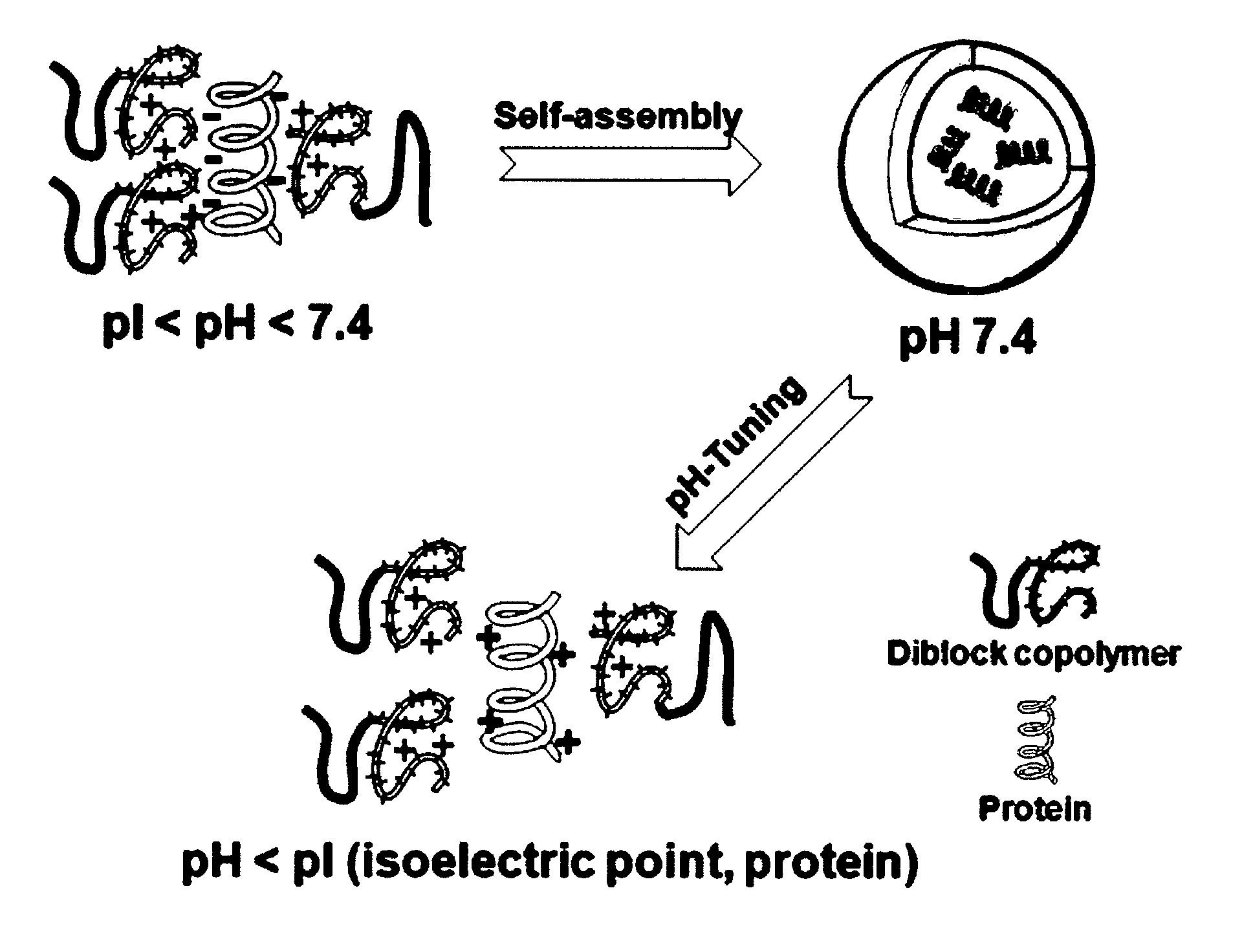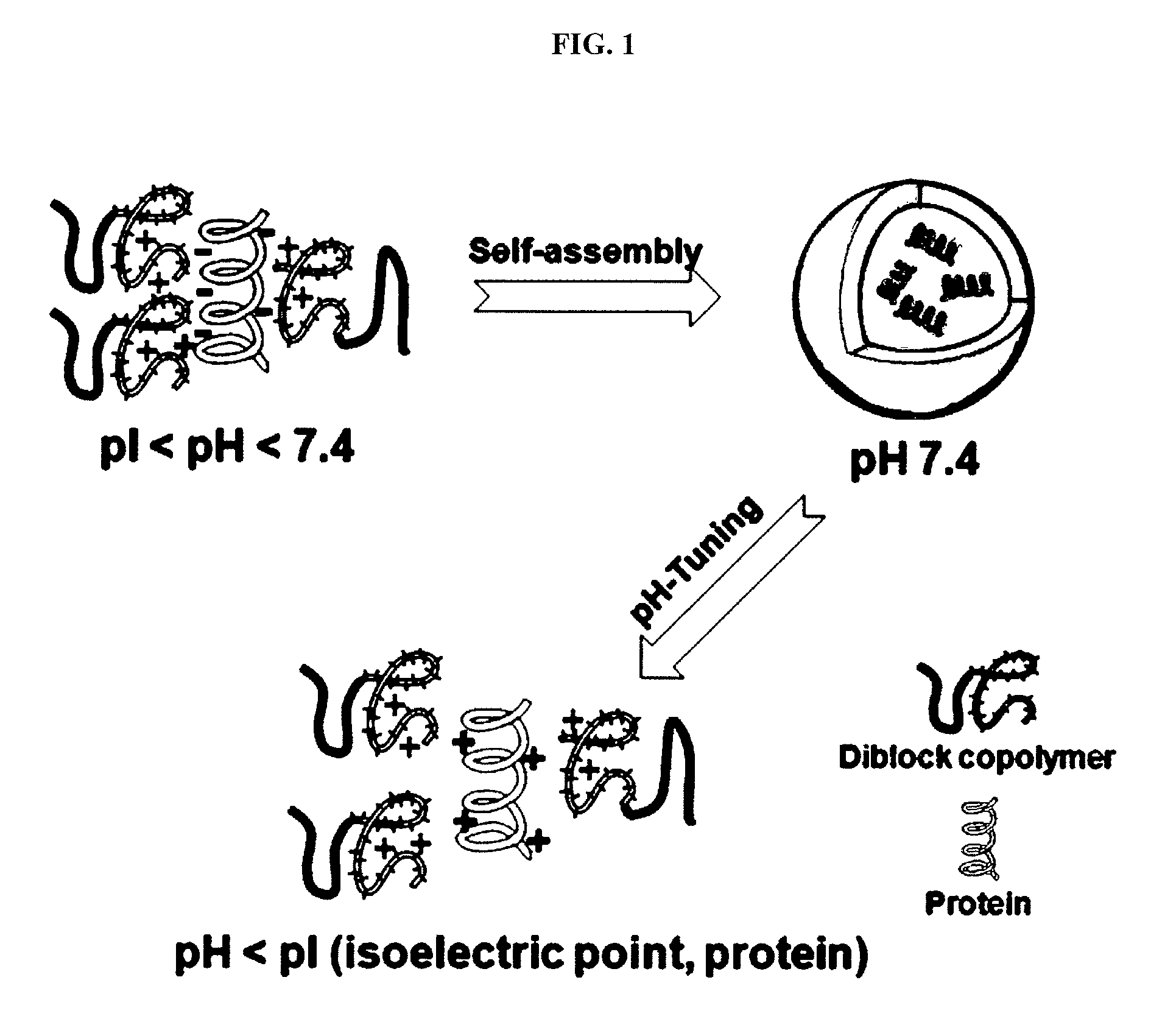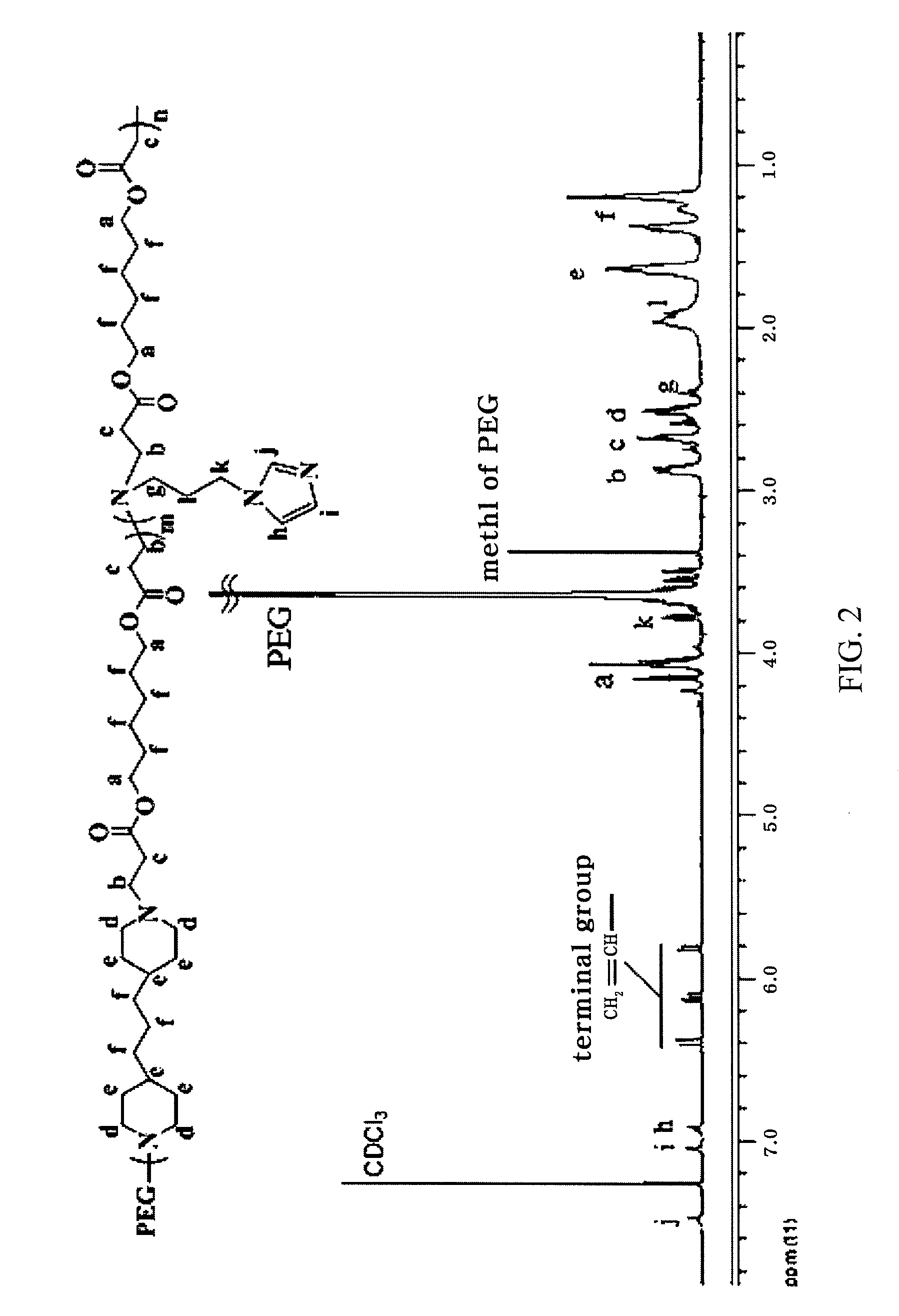Ph-sensitive block copolymer forming polyionic complex micelles and drug or protein carrier using the same
a polyionic complex and polyionic complex technology, applied in the field of ph-sensitive block copolymer, can solve the problems of poor ability of the polymer to form complexes, difficult to deliver a drug to a desired site, and no description regarding efficient utilization of the poly(-amino ester) compound as a drug carrier, so as to achieve efficient delivery of drug or protein and stable containment
- Summary
- Abstract
- Description
- Claims
- Application Information
AI Technical Summary
Benefits of technology
Problems solved by technology
Method used
Image
Examples
examples 1-10
Synthesis of pH-Sensitive Block Copolymers
example 1
Preparation of polyethylene glycol-poly(β-amino ester)-aminopropylimidazole Block Copolymer (PEG-PAE-API)
[0103]Polyethylene glycol methyl ether (MPEG5000, Mn=5,000) was dewatered in a vacuum oven at 90° C. for 2 hr and were then reacted with acryloyl chloride in toluene containing triethylamine (TEA) at 45° C. for 15 hr. The reaction mixture was filtered to remove unreacted triethylamine salt, extracted with a dilute aqueous hydrochloric acid solution, and precipitated in ethyl ether to afford polyethylene glycol end-capped with an acrylate group (A-PEG). A-PEG (0.1 mol), 4,4′-trimethylene dipiperidine (1 mol) as a diamine, 1,6-hexanediol diacrylate (1 mol) and aminopropylimidazole (0.1 mol) were placed in a two-neck round bottom flask and nitrogen gas was purged under reduced pressure. The reaction was continued in chloroform as a reaction solvent at 50° C. for 3 days. The reaction mixture was precipitated in hexane and ethyl ether (1:1) as co-solvent and dried, affording a polyet...
example 2
[0104]A PEG-PAE-API block copolymer having a number average molecular weight (Mn) of 10,000 was prepared in a yield of 91% in the same manner as in Example 1, except that 4,4′-trimethylene dipiperidine and aminopropylimidazole (API) were used in amounts of 0.8 mol and 0.3 mol, respectively.
PUM
| Property | Measurement | Unit |
|---|---|---|
| pH-sensitive | aaaaa | aaaaa |
| pH | aaaaa | aaaaa |
| molecular weight | aaaaa | aaaaa |
Abstract
Description
Claims
Application Information
 Login to View More
Login to View More - R&D
- Intellectual Property
- Life Sciences
- Materials
- Tech Scout
- Unparalleled Data Quality
- Higher Quality Content
- 60% Fewer Hallucinations
Browse by: Latest US Patents, China's latest patents, Technical Efficacy Thesaurus, Application Domain, Technology Topic, Popular Technical Reports.
© 2025 PatSnap. All rights reserved.Legal|Privacy policy|Modern Slavery Act Transparency Statement|Sitemap|About US| Contact US: help@patsnap.com



